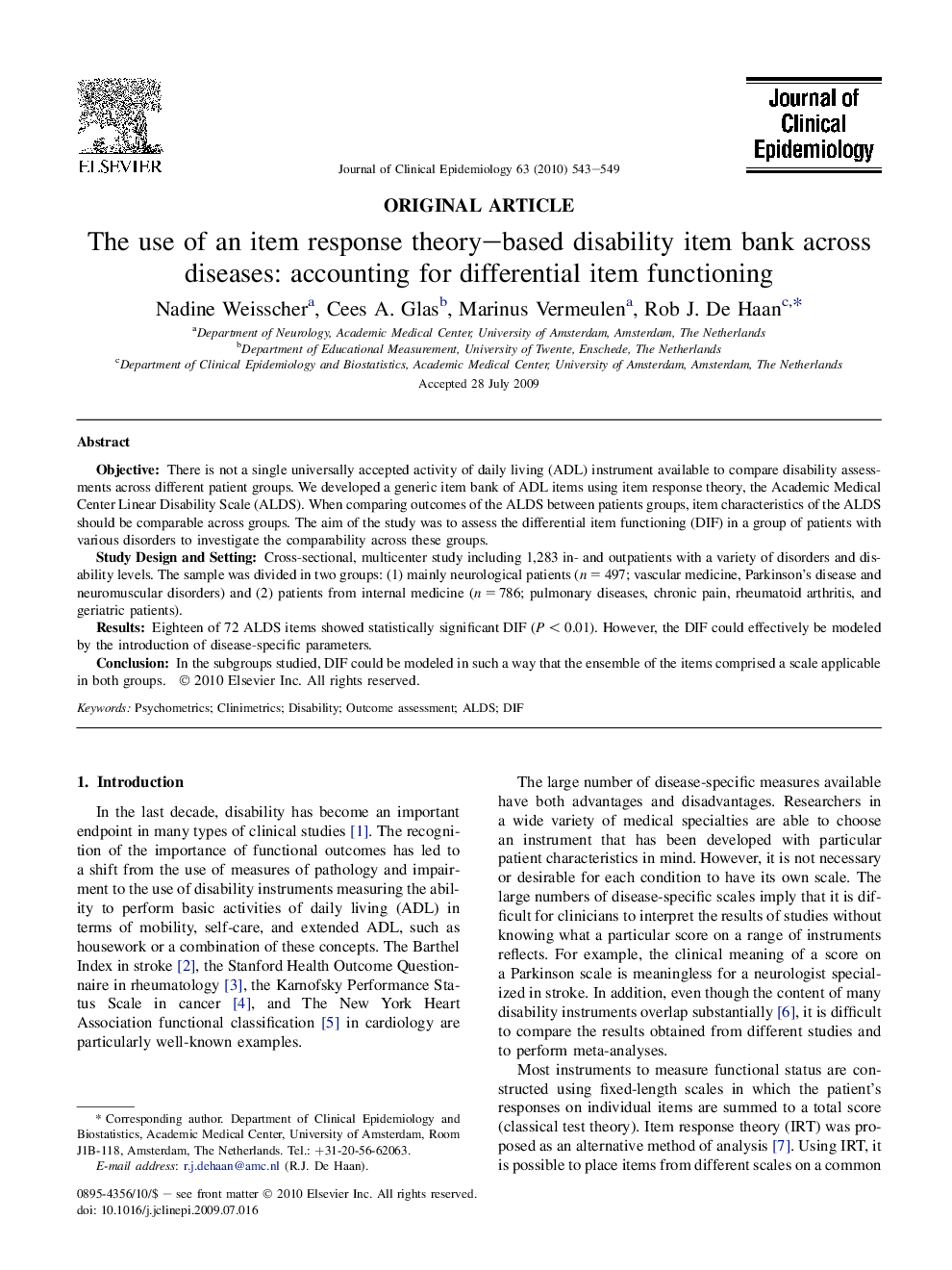| Article ID | Journal | Published Year | Pages | File Type |
|---|---|---|---|---|
| 1083196 | Journal of Clinical Epidemiology | 2010 | 7 Pages |
ObjectiveThere is not a single universally accepted activity of daily living (ADL) instrument available to compare disability assessments across different patient groups. We developed a generic item bank of ADL items using item response theory, the Academic Medical Center Linear Disability Scale (ALDS). When comparing outcomes of the ALDS between patients groups, item characteristics of the ALDS should be comparable across groups. The aim of the study was to assess the differential item functioning (DIF) in a group of patients with various disorders to investigate the comparability across these groups.Study Design and SettingCross-sectional, multicenter study including 1,283 in- and outpatients with a variety of disorders and disability levels. The sample was divided in two groups: (1) mainly neurological patients (n = 497; vascular medicine, Parkinson's disease and neuromuscular disorders) and (2) patients from internal medicine (n = 786; pulmonary diseases, chronic pain, rheumatoid arthritis, and geriatric patients).ResultsEighteen of 72 ALDS items showed statistically significant DIF (P < 0.01). However, the DIF could effectively be modeled by the introduction of disease-specific parameters.ConclusionIn the subgroups studied, DIF could be modeled in such a way that the ensemble of the items comprised a scale applicable in both groups.
